#catherine of valois
Text


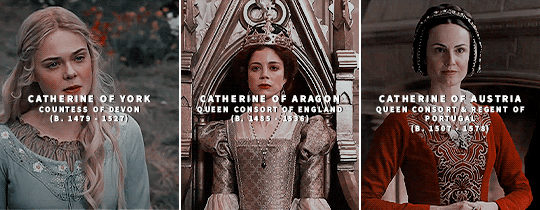


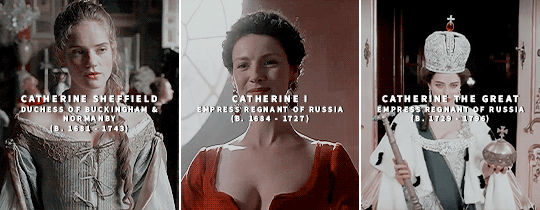
↳ Historical Ladies Name: Katherine/Catherine
#katherine swynford#catherine of lancaster#catherine of valois#catherine of castile#catherine of france#catherine of navarre#catherine of york#catherine of aragon#catherine of austria#catherine parr#catherine de medici#catherine howard#katherine hastings#catherine of bourbon#catherine of braganza#catherine the great#catherine sheffield#catherine i of russia#historicalnames*#historyedit#my gifs#creations*
361 notes
·
View notes
Text



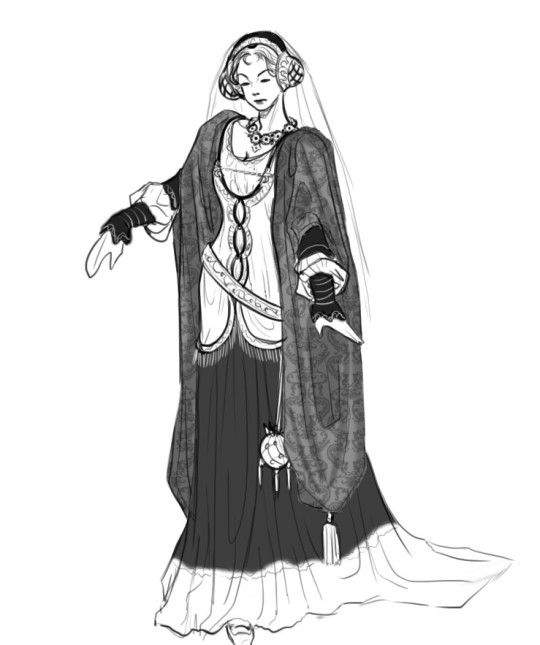
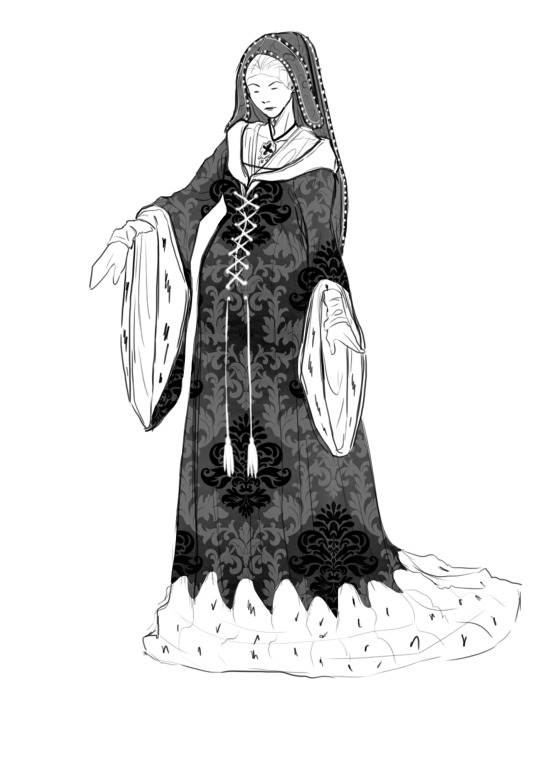

Okay, so these artworks are called
the-sketch-made-before-the-good-sketch-that-is-made-before-the-final-one-isweartoGod - final-final-final-characterdesign.psd
Life if beautiful.
#the wars of the roses#15th century#medieval#english history#historical#medieval fashion#sketch#illustration#edward iv#elizabeth woodville#elizabeth of york#henry vii#henry vi#margaret of anjou#anne beauchamp#countess of warwick#catherine of valois#isabel neville#richard iii#plantagenets#artists on tumblr#art#the white queen#the white princess
360 notes
·
View notes
Text
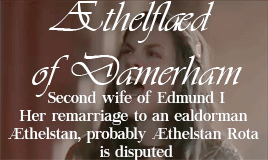



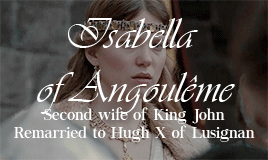



wives of english kings who remarried after their deaths
#history#historyedit#weloveperioddrama#weloveperioddramaedit#catherine parr#katherine parr#catherine of valois#isabella of valois#isabella of angouleme#margaret of france#adeliza of louvain#emma of normandy#aethelflaed of damerham#my gifs#my gifsets
115 notes
·
View notes
Text
against all odds

in which the king sets his eyes upon his queen's lady in waiting.
king hal x reader
@helens3amstuff @gatoenlaciudad @thebetawolfgirl @lovemelikecrazyiloveyoucrazy @tchalamss @ashlynnmalfoy @crazycat-ladys-blog @michakune @mxltifxnd0m @spencerr3idd @dangelnleif @sthkate @ferrjulie @imnotoverlyobsessive @mel-vaz @elsagreeer @lovely-maryj @meowmeowmau @bobthe-turmpetman29 @saintcosette @ashisabitgay @ladyladybuggg @nyrasunderwrld @remussbitch @jadahxx @starrystormwritings @ell0ra-br3kk3r @dreary-salem @drewsandsebastianswife @greenapplegrass @lilianelena39 @haybellewrites @cloudlst @si4a @ev3ningrain @ttulipwritezz @lilmaymayy @bullets-from-another-dimension @siriuslycaptainofthedawntreader @reg-arcturus-black @marina468 @3stelar @timhalamet @st4rf00k3r @idli-dosa @jimins15thhair @blacksgarden @loving-and-dreaming @thefriendlyneighborhoodmomfriend
#timothée chalamet imagine#timothée chalamet x reader#timothee chalamet fanfiction#timothée chalamet#timothee chalamet#timothee chalamet x reader#hal x reader#the king 2019#timothee chalamet imagine#timothée x reader#timothee x reader#timothée chalamet x you#timothée chalamet fanfic#hal the king#henry v#catherine of valois#lady in waiting reader#timothee#lil timmy tim#timothée chalamalabingbong#timothee fanfic#timothee x you#timmy chalamet#fanfic#fanfiction#timmy#the king#timothée hal#timothée hal chalamet#timothee hal chalamet
118 notes
·
View notes
Photo
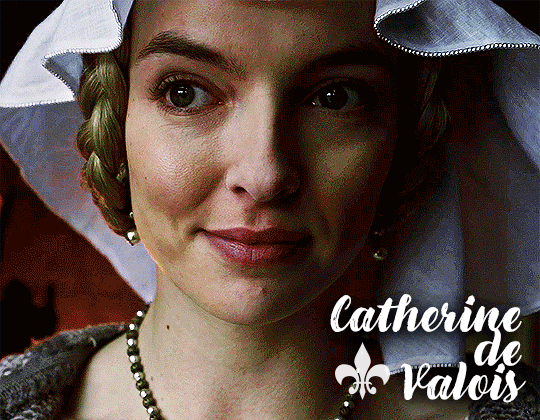
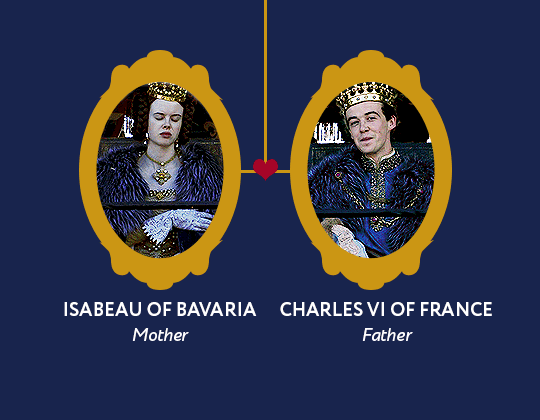
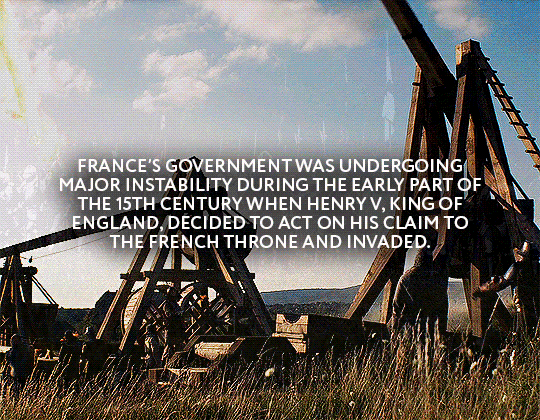

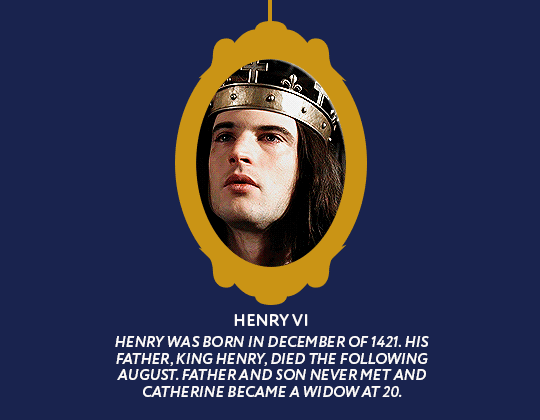

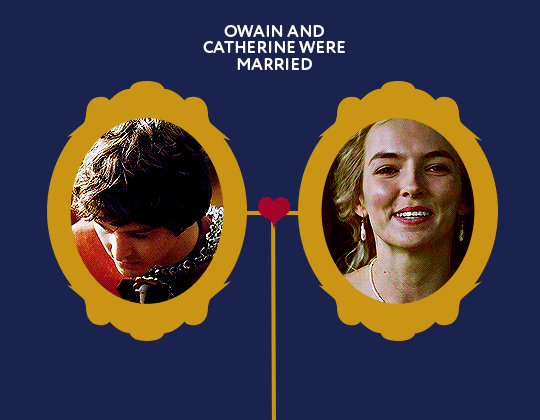


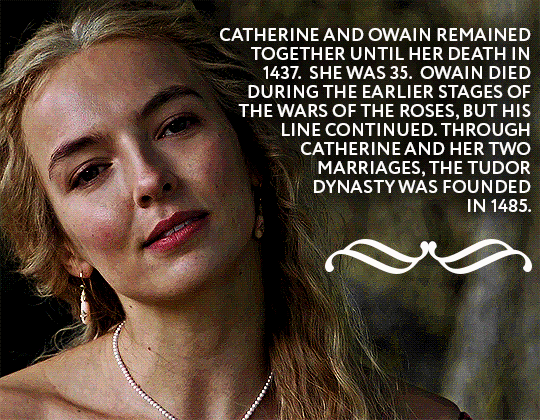
CATHERINE OF VALOIS ❀
QUEEN CONSORT OF ENGLAND
#catherine of valois#catherine de valois#periodedit#perioddramaedit#historyedit#onlyperioddramas#tudorsource#tudorgifs#henry v#henry vi#henry tudor#henry vii#isabeau of bavaria#charles vi of france#charles vi#elizabeth of york#hundred years war#the wars of the roses#margaret beaufort#jodie comer#alexander vlahos#timothee chamalet#perioddramasource#weloveperioddrama#period drama#history#gifshistorical#middle ages#medieval#tudor
800 notes
·
View notes
Quote
It is [Katherine of Valois]'s refusal to submit to male authority, as much as her wish to remarry, that lays her open to the accusation that she was governed by her lust, because her behaviour, from the lords’ perspective, was unwise, ill-advised, and reckless. In addition to Katherine’s disobedience they likely also felt disappointed in her. She had been married to a revered king, around whose memory an intense culture of commemoration flourished. Even without the potential problem of an influential stepfather for Henry VI, Katherine’s wish to marry any man, let alone a mere Welsh squire, was a profound betrayal of Henry V’s memory.
Katherine J. Lewis, “Katherine of Valois: The Vicissitudes of Reputation” | Later Plantagenet and the Wars of the Roses Consorts: Power, Influence, and Dynasty (2023)
It is conceivable that Katherine’s actions were viewed by those lords as proof of her wrongheadedness and expressed by them in the misogynistic terms conveyed by the chronicler. While this may have been how Katherine was regarded by some at court, there is no evidence that this was how she was viewed more widely. As noted above, her marriage was not publicly known, and she was not in disgrace.
#catherine of valois#owen tudor#henry v#historicwomendaily#historian: katherine lewis#later plantagenet and the wars of the roses consorts
99 notes
·
View notes
Photo
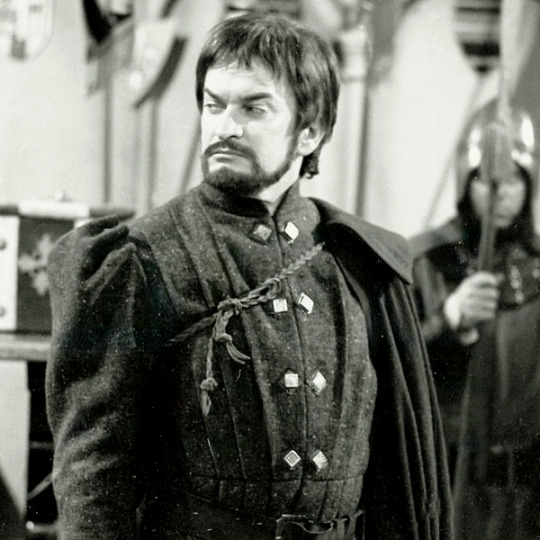

Derek Godfrey as Owen Tudor with Dorothy Tutin as Catherine of Valois, Dowager Queen of England
BBC’s The Queen and The Welshman (1966)
#the queen and the welshman#perioddramaedit#derek godfrey#dorothy tutin#Owen Tudor#Catherine of Valois#Catherine de Valois#catherine de'valois#edit#play: the queen and the welshman#movie: the queen and the welshman#original edit
97 notes
·
View notes
Note
What's the relationship between Henry V and his wife?
Hey, thank you for this question since it covers a topic I'd been wanting to talk about for awhile. Sorry it took so long to give you an answer. In my defence, I've had a lot on and I wrote a lot (a lot, like nearly 10,000 words a lot) in reply.
Unfortunately, we don't know an awful lot about Catherine de Valois's relationship with Henry V. This is largely because they were only married for just under 2 years and 3 months.* That brief a time tends to leave little evidence behind - it's also one of the reasons we know very little about Catherine's queenship. In spite of the lack of evidence, the relationship has been subject to much speculation, mythologising and (over)interpretation, and it can be hard to drill down through these layers to come to any kind of certainty about how they felt about each other.
There are three main interpretations of the marriage. The first is the romantic. This tends to work with the more romantic legends of both Henry and Catherine, and its roots lie in contemporary narratives, quite likely promoted by Henry himself. The second is that there was some kind of infatuation on Henry's behalf that was followed by disillusionment as he realised Catherine was not who or what he thought she was. The third interpretation argues that Henry was a cruel and abusive husband to Catherine.
I, personally, don't find any of these interpretations particularly convincing. The politics around the marriage suggest that we should be sceptical of the romantic, while the evidence of there being some kind of disillusionment or cruelty in the marriage is... pretty much non-existent; the evidence that is cited has to be heavily interpreted, with at least a pre-existing bias against Henry and/or Catherine in mind (if not a pre-conceived conclusion) to conclude that the marriage was unhappy.
I'm going to start with my own interpretation and then talk more in depth about these interpretations, debunking particular assertions said because there's a lot about them that annoy me.
Evidence, or something like it.
We have very little evidence of Henry or Catherine's personal lives at all and once we also factor in the limited evidence of their relationship, it gets very tricky to discuss this in any meaningful sense. Another issue is that their relationship was both personal and political. What might read as a personal gesture of love has to be understood as also existing in a public, political world. Being publicly seen as part of a functioning, loving marriage was advantageous to both Henry and Catherine's reputations and their rule, whatever they felt about each other privately, and unfortunately, it's the public face that largely survives. I'm going to discuss the public/political side of their marriage first and then turn to what little evidence there is to suggest at their private relationship.
A Partnership
Chroniclers in both England and France report romantic stories about Henry and Catherine. I'll discuss these more further below and the possibility of these being the result of some romantic gloss, but it's enough to say that the chronicles do uniformly give a similar view. The English king was in love and the French princess was beautiful (women very rarely get given any interiority in chronicle accounts). There are no reports of discontent between the couple, no complaints of mistreatment of one by the other.
It is easy to argue that the English chroniclers and those French chroniclers sympathetic to the English occupiers were unlikely to depict Henry V in a bad light but that would not explain the silence of chroniclers sympathetic to the then-Dauphin (the future Charles VII). We even have complaints of Henry's behaviour from French sources but these relate by claim that Charles VI and Isabeau of Bavaria were left to lodge at the Hôtel de St Pol in less grand estate than they were accustomed to while Henry and Catherine lodged at the Lourve in luxury and splendour. Jean de Waurin records:
And on this said day [Whitsun 1422] the King and Queen of England sat grandly and magnificently at table to dine, crowned with their precious diadems. There sat also at other tables in this hall the ecclesiastics, dukes, princes, barons, knights, and noble men, who were all honourably served, each one according to what belonged to his rank. So the king and queen that day held a court grand and rich beyond the French custom; and the people of Paris went in crowds to the castle of the Louvre to see the style and demeanour of the King and Queen of England holding open court and wearing crowns.
On the other hand the King and Queen of France held their Court by themselves in their Hotel of St. Pol, but by no means so grandly or plentifully as they were accustomed to do in days gone by. .
I quoted it at length because it also gives a glimpse of how a French chronicler viewed Catherine at the time of her marriage, which as Henry's partner of equal standing (for as much as that was possible for a medieval queen-consort). This sense of partnership is also found in some of the surviving evidence: she received gifts alongside him, accompanied Henry on some ceremonial entries (the exceptions being when she made her own entry or when they made the ceremonial entry into Paris in 1420 where Henry entered with Charles VI and Catherine with Isabeau of Bavaria). It doesn't tell us much about the inner-workings of their relationship but it does tell us that, at least publicly, their marriage was not one where one spouse was drastically unequal to the other, but one where they were partners of equal standing.
As far as we can tell, Henry also gave Catherine the space to establish herself as queen. She was welcomed to England with pageantry that befitted her status and that centred her, not Henry, and took part in a ceremonial entry to Paris in 1422 where she was the centre. He was not present at her coronation - this has, perhaps unsurprisingly, been interpreted as Henry slighting her but it was custom for a king not to attend his wife's coronation unless they were being coronated together, so not to draw attention away from her. It's possible that the parts of their 1421 progress through England where they travelled separately served a similar purpose in allowing Catherine the opportunity to be centred as queen, though practicalities (such as the exorbitant costs of a combined household on progress, a frequent cause of complaint for other medieval kings) were undoubtedly at play too.
On a similar note, we have a letter from Henry seconding Catherine's request that her physician would have a benefice without cure. This isn't anything special or unusual but it does show that Catherine felt she could make these requests and Henry trusted her judgement enough to grant them. In the Calendar of Patent Rolls, we also find that he granted Catherine's confessor £20 yearly and that he pardoned Beatrice, Lady Talbot of a fine in part because of her good service to Catherine - which may suggest Catherine had interceded privately for her, or had spoken to Henry of her service.
Henry also named Catherine as one of the supervisors in his last will, written in June 1421. In the codicils added just days before his death in August 1422, he states:
we wish that our said consort after our death should live and reside with our most beloved son in his office
This, again, is fairly standard stuff since the children of medieval nobility tended to reside with their mother in the nursery until they were around 8 years old. But again, it does indicate that Henry saw Catherine as someone worthy of trust and that he wished for her to live with their son, where she might not be at the centre of the court during the minority, but would develop a close rapport with her son and quite possibly come to wield a great deal of influence as Henry matured and took on more responsibility. It also ensured her a continuing presence in the royal court. The chroniclers depicted Catherine as a prop to support the infant king, carrying him to parliament and so on, which does mean she was present on those occasions at, like Henry VI, at the symbolic centre of them. But this does not necessarily mean that was all she did. Queens were supposed to work behind the scenes.
Another piece of the puzzle may be the coupling of mottoes. At some point in 1420, a red cloth covering for the king's barge was embroidered with Henry's motto of une sanz pluis coupled with a second motto, humblement le requier ('I humbly request it') - this barge covering was said to have been for the "for the king and the queen", while the 1423 inventory of Henry's goods referred to a similar barge covering embroidered with the "mottoes of the king and queen". If they are the same barge covering, humblement le requier may be Catherine's motto or at least connected to her (Henry also had a tunic of white and blue satin embroidered with humblement le requier, which may have meant he was wearing clothes decorated with her motto or in his own motto referring to her). Malcolm Vale argues that these mottoes are a love dedication - a request by Catherine (she humbly requests Henry's fidelity), and Henry's answer (Catherine is Henry's "one" and there will be none other than her). It is likely, as Vale notes, that these are fairly conventional mottoes, gesturing towards courtly love rather than a heartfelt dedication but if Vale is correct in reading them as a "statement and response", they suggest that Henry and Catherine wanted their relationship to be seen as a partnership.
I also wonder if Catherine's motto of humblement le requier (if it was her motto) may have been a broader statement on her queenship, setting up her as an intercessor. We have very few indications of Catherine interceding to Henry - there is a story that she interceded with Henry for the release of James I of Scotland at her coronation feast but given Henry was not present, it's likely this story confused her role in James I's release during the minority of Henry VI - but the motto may be a suggestion that this was the role Henry wanted for his wife. My own gut feeling is that Henry intended to model his marriage with Catherine on that of Edward III's marriage to Philippa of Hainault, a famous intercessor and the woman who was seen as the paragon of medieval queenship.
Everything in this section is pretty typical queenly stuff. It can't tell us about Catherine and Henry's personal relationship but it does show that Catherine's queenship was conventional. There is nothing - nothing at all - that suggests her position was being undermined by Henry. Unless we wish to argue that medieval queenship was effectively a symbolic and utterly powerless role - and there's a whole bunch of queenship studies that says differently - Catherine was or at least intended to be a vital partner in Henry's kingship. That Henry did not live long enough for Catherine to get the chance to exercise this role long enough for a record of it to survive does not mean that she never played that role because he devalued her or refused to let her be a queen in more than name.
Personal Relationship.
There's very little surviving evidence of their personal relationship but there is some evidence that we can tease out that might tell us a bit more about their relationship.
One of these is that two harps were shipped from England to France in October 1420 for their use. This may have formed an entirely conventional gift, since playing musical instruments was a common hobby amongst the nobility. However, we know Henry had a particular interest in music himself - he'd played the harp since a child, purchased another new harp with a set of strings and a case in in September 1421, purchased bags to carry his own recorders and pipes/flutes and was possibly the "Roy Henry" who composed two mass movements. He was also part of a musical family - his mother may have composed music herself, as may his father (who is the other contender as the composer of the Roy Henry movements), while his brothers were patrons of noted composers of the era. So, the fact that two harps were shipped over for their use could indicate that they had a shared interest or Henry was attempting to share his interest with Catherine or introducing her to a hobby that his family prized. We know nothing about whether Catherine had an interest in music or what kind of interest she had to be more precise and of course it could just be a fairly conventional gift.
Another piece of evidence is Henry's will. In the original will, drawn up in June 1421, left Catherine a great deal of moveable goods. From his chapel and altar, he left her all the"gold, silver-gilt and silver treasures and all other ornaments", as well as vestments and books for 20 clerks that would serve Catherine after his death. He also left her all the beds, furnishings, vessels, instruments and possessions of his chamber and hall. He notes two indentures left that specifically detail the items he wishes specifically to be bequeathed to her and states:
we wish our aforesaid most beloved consort to have and enjoy all the aforesaid items bequeathed to her in this way if she should be happy to be satisfied with them as her interest and share of all our moveable goods that can come to her in any way after our demise. Otherwise our said executors should dispose of all the aforesaid items, thus bequeathed to our aforesaid consort, as is said above, as our other goods.
In other words, he's leaving her a lot of stuff, he's got stuff he wants her specifically to have but he's also giving her the freedom to pick and choose what she wants, and if she doesn't want them, they're to be dealt with like his other goods. (n.b. "our most beloved consort" was a standard term of address, it isn't necessarily a statement of his true feelings).
This paragraph also ends with this note:
Item, we bequeath to our same consort a golden cross of ours with a piece of the wood of the Holy Cross, now in her custody, which we were accustomed to wear.
Which suggests that he might have lent this relic to her - one that might have been important to him, given he states he was "accustomed" to wear it - and wishes that it belong to her now. It may have been a gesture of affection that he loaned the relic to her, or it may have been another conventional gift, perhaps given when he left England for France in June 1421, knowing she was pregnant.
Just four days before his death, Henry added codicils to his will. Most of these codicils is concerned with the future - making provisions for his son - but the first codicil concerns itself with more bequests for Catherine, this time fairly specific bequests, and the provision of her dower. While these may have been a fairly standard provision and may reflect Catherine's enhanced status following the birth of a son and heir, it also indicates that he was thinking of her. Interestingly, the fact that this is the first codicil may well indicate that he was thinking of her in his last days, regardless of the fact that she wasn't physically present.
None of this tell us a great deal about what Henry felt for Catherine. Because their lives were heavily politicised, it's impossible to know what was a gesture of genuine affection between the two and what was a politic action that showed the respect of a king for his queen. Determining which was the primary motivation for any of Henry's actions is an exercise in speculation led by our own feelings, not an exercise that finally reveals Henry's.
Catherine's perspective.
Thus far, I've spoken mainly about evidence that hints at Henry's feelings and actions towards his wife, not Catherine's. By and large, the main reason for this is that we simply don't have evidence for her perspective. This isn't unusual; as Ruth Mazo Karras points out, it's rare that the surviving historical evidences any woman's perspective on her marriage.
The closest thing we have to evidence is a letter Agnes Strickland mentions in Lives of the Queens of England from the Norman Conquest:
Early in the same spring [of 1422] Katherine wrote her warlike lord a most loving letter, declaring that she earnestly longed to behold him once more.
However, Strickland does not give a source for her letter and in Letters of the Queens of England, 1100-1547, Anne Crawford says that none of Catherine's letters are known to survive though she (nor anyone else) doesn't mention Strickland's citation of a letter. Having said that, Strickland is nowadays notorious for inventing "facts" about her subjects that are have no basis in truth. So I'm inclined to treat this letter as a bit of romantic fakery, whether by Strickland or by someone else.
Catherine did pay for Henry's tomb but this seems to have been a standard action for a widowed queen and we don't know whether she had any influence on the design and construction of the tomb. She was not buried beside Henry or in the same chapel, but in the Lady Chapel (her tomb was dismantled and her body exhumed in 1502, she is now interred in Henry's chantry chapel), which is very close to the chapel of St. Edward where Henry was buried. We don't know why she chose this burial location, or if she chose it at all.
Given her status as Henry V's widow and queen and the fact that she was footing the bill for his tomb, it seems likely that she had some opportunity to be buried beside him, but it wasn't taken up. It might not have been wholly her choice. There was limited space in St. Edward's chapel (Henry VI struggled to find space for his own tomb, which was never built) and there might have been political issues or propaganda at play. Depending on how quickly she had to make that decision, Catherine may have been considering an uncertain future where she might not remain in England (if her son was to achieve France, if she married a foreign lord). Alternatively, her second marriage may have meant that burial beside Henry was a denial of Owen and their children or, given the heights of Henry's reputation, was no longer something she (or others) felt she "deserved" following her re-marriage. We just don't know.
And that pretty much sums up Catherine's perspective: we just don't know what she felt about Henry.
Success or failure?
Politically and dynastically, I think we can say the marriage was successful - it produced an heir, it promised peace with France and Catherine appears to have been a popular and successful queen-consort in England. It is true that the peace with France never came to fruition or that the birth of more children could have safeguarded Henry VI's reign and the Lancastrian dynasty but... these issues were caused more by the marriage's end than by its actuality, and other factors were at play - not least Henry V's premature death.
Personally? We just don't know. The evidence isn't there. We don't know what Catherine felt about Henry, we know frustratingly very little about her. Henry's actions suggest that he was treating Catherine with the respect her station and status as his wife deserved, that he was using the tropes of courtly love to do so, but we have no idea whether this reflected anything of his own feelings for her.
The Romantic Fairy Tale
The romantic interpretation of their marriage tends to fit in with the more romantic legends of both Henry and Catherine; at its core it is quite simply a fairytale-type of story. He is a handsome warrior king who sweeps the beautiful French princess (most commonly the most beautiful woman in existence) off her feet, she falls instantly in love with the magnanimous conqueror.
It is true that chronicles have fostered a view that the relationship between Catherine and Henry was a romantic one, and this view is perhaps aided by William Shakespeare's depiction of their courtship in Henry V. Although some productions and a great deal of scholarship offer up much darker interpretation of their one scene, a lot of times it is presented as a romantic one - particularly in the filmed versions of the play. As big as a shadow as Shakespeare casts, Catherine's scenes in Henry V are ahistorical, appearing to be Shakespeare's inventions.
Chronicle accounts of Catherine and Henry's relationship need to be viewed with a good deal of cynicism. They could be written to promote certain messages or to flatter patrons (or potential patrons), dedicatees and/or desired readers. Titus Livius Frulovisi reports in the Vita Henrici Quinti that Henry fell in love with Catherine at their first meeting but as Katherine J. Lewis points out, the book was addressed to their son, Henry VI, and the story's inclusion may have been to please him. Frulovisi was also employed by Humphrey, Duke of Gloucester, Henry V's brother, and the Vita was intended to lionise Henry V, so these no doubt played a role in its depiction of Henry V's marriage to Catherine. Being a good husband was an ideal of kingship, since the king could be said to be metaphorically married to his kingdom and the way he was perceived to treat his wife could be seen as reflecting his ability to rule well.
There are similar stories of Henry V being greatly pleased when he receives a portrait of Catherine or becoming lovesick upon hearing the report of his ambassadors' meeting with her. In these stories, the moment of "instant love" comes before Henry ever meets her. Those particular stories could be said to be deploying the tropes of courtly romance to gloss over the fact that Henry's intention to marry Catherine was driven by much less emotive reasons. Given one of these stories is contained with the letter of a Venetian merchant who was trying to sell Henry a balas ruby (a red spinel), this may have even been a story deliberately publicised by Henry - perhaps with the intention of making himself look eager for marriage, perhaps to put pressure on the French.
Monstrelet tells us that Henry greeted Catherine "joyously, as if she were an angel of God" upon her arrival in Paris in May 1422. This might be a sign of personal affection for Catherine but there are other factors at play. Given his goals in France and her status as Charles VI's daughter, it'd be especially politic for Henry to greet Catherine affectionately. The fact that this was the first time they'd seen each other after the birth of their son may have also played a role in this greeting.
Henry V does seem to have been especially conscious of the ideals of kingship and trying to behave in line with them. As I've already indicated, his behaviour around Catherine - especially in public - may well have been intended to give the image of himself as a devoted suitor and husband. It doesn't necessarily mean that there was nothing but cold-blooded cynicism in his approach to Catherine but it's pretty clear that Henry had an acute understanding of his image and what was desired of him, and it would be short-sighted not to imagine that this understanding didn't play a role in his relationship with Catherine. The relationship between a king and queen was political just as much as - if not more than - it was personal.
There is little evidence that Henry was moved by any romantic impulse into fast-tracking his marriage to Catherine. During initial negotiations with the French, he asked for a dowry of 2 million crowns and rejected the French's counter of 800,000 crowns. His decision in 1420 to forgo a dowry for Catherine might have been a gesture of love or some other romantic feeling - or it might have been (and is, in my opinion, more likely) a shrewd political move, where Henry avoided taking a dowry that implied his inheritance of the French throne was through his marriage to Catherine rather than in his own right.
At the end of the day, too, they didn't marry because they fell desperately in love. They married for diplomatic reasons, for political reasons and for a peace treaty. It was the politically wise thing to do. It was, after all, a fairly standard marriage within the context of his own family and the medieval and early modern European monarchy. This doesn't mean it was a bad marriage or that there was no possibility of love. But it's not the reason they got married. We have very little evidence of their married life together to know whether any romance did develop.
Infatuation Followed By Disillusionment
This interpretation generally follows a particular narrative where the stories about Henry falling in love with Catherine at their first meeting are true but it's more of an infatuation or crush and as he gets to know Catherine better, he finds himself disillusioned by her and they become estranged. This might happen for a variety of reasons: a realisation that the Treaty of Troyes was not the win he thought it was, the realisation that while she's pretty, she's unintelligent, or the realisation that she's ruled by lust.
There is no real evidence for an estrangement. I believe it draws mainly on the idea that they spent about half of their marriage apart but, personally, I suspect that time was more of a reaction to the military situation in France following the Battle of Baugé and the fact that Catherine was pregnant for the first time (I'll discuss in much more detail below).
Catherine as the femme fatale and the Treaty of Troyes.
There have been reassessments of the Treaty of Troyes that argue far from the disastrous blow to France, put England at a disadvantage. The argument then follows that after Henry's rather slow realisation of this fact, he came to blame Catherine (...somehow) or at least distanced himself from her as a result. I'm... not entirely sure what logic Henry would have used since Catherine appears to have had no role in the actual negotiations and Henry was a 33-year-old man surrounded by the best people to advise him. Frankly, this interpretation seems to be heavily based on the misogynistic narrative of "a pretty young woman bamboozles an older man with her beauty in order to ensnare him in her evil trap otherwise he wouldn't have made such a stupid error" (we find a similar narrative with Margaret of Anjou and the surrender of Maine and Anjou). There are no indications that the Treaty of Troyes came to be viewed as an unfair bargain in England or that Catherine's reputation or relationships suffered as a result.
Catherine as a "dumb blonde".
This view is best surmised by novelist Anne O'Brien who describes historians' typical depiction of Catherine is the "archetypal ‘dumb blonde’", or Anne Crawford who claims:
Katherine had beauty to recommend her but neither the intelligence nor personality to captivate for long a man of Henry V's qualities.
There is no evidence that Catherine was lacking in intelligence, education or personality. Even if she was, she is still deserving of respect and personhood. The idea that Catherine was poorly educated comes from now-debunked claims that Isabeau of Bavaria neglected her children; most likely Catherine was educated to the standard for royal women and knew how to speak both French and English upon her marriage to Henry. It has been suggested that poems like John Lydgate's Temple of Glas and Sir Gawain and the Green Knight could be connected to Catherine, which could, in turn, make her the patron behind them. It's difficult to tell what the evidence to support this interpretation of Catherine is. Largely, it seems to insist on her lack of intelligence on the basis the misogynist claim that she was governed by lust and thus "unwise" and the belief that the absence of evidence on Catherine's life and personality tells us something meaningful about her personality. It does not. Absence of evidence isn't evidence, it is only an absence.
Catherine as a nymphomaniac.
Uncritically accepting the claim that Catherine was "unable to fully control her fleshly passions", this view is often an extension of the "dumb blonde" narrative wherein Henry eventually learns that Catherine is a hollow creature who cares only for lust and pleasure and is repulsed by her. The most extreme example I know of is Denise Giardina's novel, Good King Harry, where Henry first falls in love with Catherine only to discover that Catherine is the young and beautiful version of her monstrously oversexed and monstrous mother, Isabeau of Bavaria. Catherine is neither a virgin on her wedding night nor faithful to Henry, at one time even boasting that he didn't father Henry VI. Giardina's depiction is tied up in the incredibly misogynist depictions of Catherine as a slut or a nymphomaniac.
There is no evidence that Catherine was an adulteress. There were no contemporary claims that she committed adultery or that any of her children were bastards - even when we might imagine that it would be beneficial for these claims to be aired (i.e. if it was plausible that Henry VI wasn't Henry V's son, why didn't Richard, Duke of York claim that? Why didn't Richard III claim Edmund Tudor was a bastard when he was denigrating Henry VII's ancestry and falsely claiming Owen Tudor was a bastard?). The evidence for Catherine being a "slut" are basically a standard antifeminist smear by a chronicler that has been uncritically repeated. We know of only two sexual relationships she had - both of which were with men she married (and she was married to Owen Tudor), her second marriage was made years after being widowed in her early 20s. The view of her as "sluttish" because of her Tudor marriage may reflect moralistic outrage over the fact that Owen was Welsh and of much lower status than Catherine, as well as the possibility that the marriage was perceived as a "profound betrayal of Henry V's memory". There is no evidence that her relationship with Edmund Beaufort was sexual and the idea of Catherine marrying Beaufort may have even originated from the Beauforts, not Catherine. Even if she did have a sexual relationship with Beaufort (which we do not and cannot know), are we really saying that a woman having sex with three men, two of which were her husband and the other she almost married, over the course of a lifetime makes her a slut? Even if Catherine had sex with 58 trillion different people (which she very obviously didn't), we as modern commentators should do better that to uncritically repeat and confirm the misogynistic and slut shaming rhetoric of medieval and early modern writers.
But to come back to the question that this behaviour could have had on her marriage to Henry - well, we have no evidence of this. It is incredibly unlikely that she cuckolded him or had any affairs, and we have no evidence that Henry was repulsed by Catherine liking and wanting sex. It's possible, of course, that there was some kind of sexual incompatibility between them though we don't and can't know that. At the end of the day, there is no evidence to hang a theory on.
A "Cruel" Marriage?
The interpretation that the marriage was a cruel one. Typically, this is hand-in-hand with the revisionist interpretations of Henry (cf. Ian Mortimer, Keith Dockray, A. J. Pollard) that see him as a warmongerer and the worst of the late medieval English kings, utterly unredeemable. This interpretation most commonly features an cold and brutal Henry, often a marital rapist, abusive, neglectful or just not interested in Catherine beyond the getting of heirs.
There is no real evidence that the marriage was an unhappy one, that Henry raped, abused, neglected or otherwise mistreated Catherine. I am aware in saying this, I am making it sound like evidence of any of this would have naturally existed and survived to be picked over; I don't believe this to be the case. Abuse often occurs in secrecy and silence and it is perhaps to be expected that any evidence of historical cases of abuse would be limited and fragmentary, if it survived or even if it existed in the first place. But an absence of evidence is still an absence of evidence. It's not proof, it doesn't provide any support for a theory.
In view of the absence of this evidence, the arguments that the marriage was unhappy or cruel largely heavily interpret (if not over interpret) the few facts of their marriage that we can talk about. These are:
That they spent about half of their marriage apart
Catherine did not attend Henry V's deathbed
The marriage was political and/or the result of a peace treaty.
General unsupported assumptions of their personalities
Catherine was "very young" at their marriage
It took them a while to conceive a child.
But almost all begin with the argument that Shakespeare's depiction of Henry and Catherine in Henry V was unquestionably a romantic one and that Shakespeare (as he always does) has muddied the waters, ensuring that we cannot perceive the truth. To be entirely blunt, if one dips their toe into the scholarship on Shakespeare's Catherine, one very quickly finds that Shakespeare's depiction is far more complicated with its view on Catherine and her relationship with Henry.
They spent about half their marriage apart.
This is usually marshalled into an argument about there being some incompatibility or dislike between the two. That if Henry had really cared for Catherine, he would have been at her side at all times, or at least spent less time away from her (see above for the idea that there was an estrangement).
The extreme brevity of their marriage and the paucity of evidence of their lives makes the time spent apart very difficult to assess clearly. The statistic of "half their marriage was spent apart" seems like a cold, hard fact but we are talking about a marriage that lasted just over two years. We have no idea whether that statistic would have remained the same had Henry V not died in August 1422 and their marriage lasted for longer, or whether that statistic would be the same if England and France had been at peace. Medieval kings and queens often spent time apart - at times, they were even criticised for spending time together because it cost more money to maintain the two separate households as one.
What we do know, however, is that the lengthiest time Catherine and Henry spent apart - from June 1421 to May 1422; a little less than a year - was impacted by two major developments. The Battle of Baugé (22 March 1421) was the first English defeat in France since the hostilities had reignited in 1415 and it was there that Henry's brother and heir, Thomas, Duke of Clarence, died. Clarence was a major commander in Henry's campaigns; the impact of his loss cannot be understated. In addition to any personal grief Henry felt at Clarence's loss (who was the brother he spent most of his childhood with), it is likely that Henry believed that his presence was needed in France, that he needed to step up to cover the loss of Clarence and ensure the fallout of their military defeat was minimal. Given that chronicle accounts depict Henry as trying to attend to military matters despite being ill (an action that quite possibly led to his own death), this seems like a fairly solid bit of speculation. If he was unsparing of his own physical health, even when near death, the idea that he only went on campaign to be cruel to his wife doesn't really stack up. He believed his presence was necessary and went.
The second major development was Catherine's pregnancy. Ironically, Henry VI was probably conceived around the same time as the Battle of Baugé was being fought and it is likely that Henry knew Catherine was pregnant when he returned to France. While queens did sometimes accompany their husbands on campaigns, it is possible that, this being Catherine's first pregnancy and in the uncertain atmosphere after Clarence's death, it was considered too risky for Catherine to return to France with Henry. Henry's time in France was marked by attending sieges, where disease was rife and would risks to the health of both Catherine and their unborn child. Given English concerns that the Treaty of Troyes would undermine English independence, it may have also been considered politically expedient that their first child was born in England, rather than in France (one French chronicle claims Catherine did accompany Henry into France but was sent back to England upon the discovery that she was six months' pregnant). Another possible factor here is how Catherine experienced her pregnancy - she may have had a difficult time with it and the idea of travelling to France utterly unappealing or deemed unwise.
This separation could be said to make up the bulk of their time spent apart and we have two major developments that may have impacted on it. Henry likely felt his continuous presence in France was necessary after Clarence's loss, Catherine may have remained in England for a variety of reasons, not all controllable. Yes, one of those reasons could possibly be a dislike of one spouse by the other or a mutual dislike but it could just have easily been an external factor (and I think the latter more likely, given the lack of contemporary comment). We don't and can't know.
Catherine did not attend Henry's deathbed.
There are a few things to note about this. Firstly, there may have been a fear of contagion. We don't know exactly what Henry died of** to know whether contagion was a valid fear or not, but it's possible it was. Catherine's absence may well have been designed to protect her from illness and death. Secondly, Henry's health seems to have deteriorated rather quickly. John, Duke of Bedford - Henry's brother - was summoned to Henry's deathbed late and "found him worse than he had been told". It is possible that it was not thought Henry was in great danger until it was too late.
Thirdly, less than two months after Henry's death, Charles VI also died. His death seems to have been expected. Catherine was staying with Charles in August 1422 and it's possible that she was there not just because Henry was meant to be on campaign but to attend her father's deathbed. In other words, Catherine (or those around her) may have had to choose between being with her father or husband for their death. And if Henry deteriorated quickly, that choice was may have been made for her. (It may have also been in response to the criticisms of how Charles and Isabeau had been treated, cited earlier).
Fourthly, Henry was sick and dying. Although he's typically discussed as being rational and clear-minded to the very end, he may not have been lucid. David Rundle notes that one of the codicils added to Henry's will while he was dying was "hardly grammatical" and suggests that Henry was "less than lucid". Commonly suggested ailments such as dysentery, dehydration and/or heatstroke could made him feverish and delirious. In other words, he may not have been in a sound mind to summon Catherine or for the lack of summons to be a deliberate slight against her.
And to underscore that point, Henry was dying. To me, when someone is dying, they get to choose, free from recriminations, who they want at their deathbed. We don't have access to Henry's emotions to know his specific motivations, we could just as easily argue that he didn't want Catherine there because he didn't want her to see him to die or in the state he was in. We have the exact same evidence for both. Regardless, Catherine was fit and healthy and Henry was literally dying.
Finally, Katherine J. Lewis makes the point when discussing Catherine's presence at Henry VI's French coronation that while contemporary accounts make no reference to her presence, administrative records place her with Henry VI on the coronation expedition:
It has been argued that she did not accompany Henry [VI] to France, yet while she is not mentioned in chronicles, administrative records indicate that she was with Henry in Rouen at least, if not at the French coronation itself. This is a reminder that Katherine’s absence from narrative sources should not be taken as evidence that she was no longer important.
Perhaps her absence from chronicle accounts of Henry's death do not necessarily mean she was not important or not present at the actual event? It may be worth noting that one of Henry V's biographers, John Strecche, claimed Catherine was present (however, Monstrelet claims she was kept ignorant of Henry's death for some time after).
The marriage was political and/or the result of a peace treaty.
Pretty much every royal medieval marriage was political and quite a few of them were in attempt to put an end to hostilities between nations or hostilities. Yes, Catherine and Henry's marriage was this in this category. It was normal and expected for them. Catherine had first been the subject of marriage negotiations when she was two years old. All of her siblings had married for politics except those who tied very young and Marie, who became a nun.
It doesn't make the marriage automatically cruel or destined to be unhappy. Most couples ended up in a relationship that was workable. Some of the more celebrated loving marriages in the history of English monarchs were political matches to begin with (e.g. Richard II and Anne of Bohemia) and even matches designed to end hostilities (e.g. Henry VII and Elizabeth of York). It is entirely possible that Catherine and Henry could have had a loving, affectionate marriage along those lines.
The idea that there was some family tradition in the Plantagenet royal family about marrying only for love and that Henry callously spat on this tradition, as Ian Mortimer has suggested, is nonsense. Edward III did not marry for love; he married so his mother could get an army to depose his father. If he got to choose his bride from the daughters of his mother's ally, his choice was between a girl close to his own age or a toddler. Richard II did not marry for love, he married as part of a political alliance - and these marriages did, in fact, become loving, or at least strongly affectionate. Henry IV had likely met Joan of Navarre once or twice when he married her. Historians have suggested that some of the "love matches" in the Plantagenet family (e.g. Joan of Kent and Edward of Woodstock, Katherine Swynford and John of Gaunt, Joan of Navarre and Henry IV) may have been had more pragmatic reasoning behind them.
The main arguments for the "arranged marriage" showing Henry's disregard for Catherine are:
the unrealistic demand of 2 million crowns for her dowry and his refusal to countenance Charles VI's counter-offer
that there were other brides he had negotiated marriage with.
Honestly... both are all pretty standard features of marriage negotiations. The marriages of medieval royalty weren't really about them as individuals; it was about getting the best deal. They were about the country, about the political, the financial and the territorial. Henry's unrealistic demand for 2 million crowns as a dowry probably reflected his lack of interest in peace at the time (it should be noted, as Anne Curry does, France also showed a similar lack of interest).
As far as Henry's potential other brides... again, standard. Chaucer's Parlement of Foules has been argued to represent the many suitors vying for Anne of Bohemia's hand; other brides were also considered for her eventual husband. It didn't mean they thought any less of each other. It is not... really true, either, as Ian Mortimer and the novelist Anne O'Brien have claimed, that Henry considered marriage to two of Catherine's sisters before settling on Catherine. That's actually incredibly disingenuous - Henry had been suggested as a prospective husband for both Michelle de Valois and Isabelle de Valois but these matches had been raised by Richard II in 1395, when Henry was 9, and Henry IV in 1400, when Henry was 13, respectively. Henry V had nothing to do with these negotiations beyond the being the subject of them. Possibly, he was more involved in the negotiations for a marriage between himself and an unnamed daughter of Charles VI in 1408, but we don't know this for sure. By the time Henry V acceded in 1413 and gained total control over his own marriage, Catherine had been the subject of marriage negotiations with France since 1409. Nor does Henry's attempt at negotiating marriage between himself and a daughter of John the Fearless, Duke of Burgundy, in 1411 suggest any real disrespect for Catherine; it was simply standard practice.
Personalities.
Another argument that their marriage was a cruel or unhappy one is generally the argument that they possessed certain personalities that were incompatible. Needless to say, the view of Henry as an abusive or cold husband is often tied to the revisionist view of him that tend to read him as monstrous. There isn't the space to go into my feelings about these reassessments but to me, these arguments run to extremes and never come to grips of why Henry was so beloved beyond complaining about "luck" and "Lancastrian propaganda".
We know very little about Henry's personality; very little of his private/personal life survives. We know even less about Catherine's. What we think we know about Catherine's personality comes from the myths about her relationship with Owen Tudor, the posthumous attacks on her as oversexed, and the supposition that her absence from the historical record tells us something important about her personality. None of these are reliable sources; the latter tells us more about the assumptions and biases of historians than they do Catherine. An absence of evidence is just that - an absence - not evidence itself.
(For more about the problems in determining personality in late medieval figures, see the first section in my post on Margaret of Anjou)
The most recent development of this supposed incompatibility is the idea of incompatible sexualities, where Henry is "something of a prig" (or a prude or a misogynist) because he apparently gave up sex with women after his accession to the throne and Catherine was "rather jolly", as Lisa Hilton puts it, because of all those marvellous myths about how she hooked up with Owen Tudor. In both cases, they show the difference between medieval/early modern and modern attitudes towards sex. From a medieval and early modern perspective, a chaste king was a good king as it reflected their capacity for restraint and ability to rule not only their body, but the realm (see here and here), while female sexuality was always suspect. We have very little evidence of their sex life, either together or with other partners. It's possible there was some incompatibility - but there's no real evidence of it and this narrative relies on criticising Henry for living up to contemporary ideals and praising Catherine for the contemporary and historiographical reports of her behaviour that are awash with misogyny and slut-shaming.
Catherine was "very young" at their marriage.
Catherine was born 27 October 1401, meaning she was 18 years old when she married Henry on 2 June 1420. This might seem young to modern eyes - "barely an adult" - but that's to modern eyes, not medieval. 12 was the minimum age of consent for marriage in canonical law though this was not necessarily the age at which most women married or when their marriage was consummated (most waited until later). The evidence suggests that most women married in their late teens or early twenties, though women of the gentry and nobility typically married in their teens or below canonical age - and for these women, that consummation was often delayed to their mid-to-late teens. For a comparative statistic in Catherine's own social class, the average age for the first marriage for English princesses from Edward I to Henry VII was 16.65 according to Kim Philips.
Catherine's age, then, was entirely average for her sex and even a little later than her class and later still within her family. Comparing her to her female relatives shows that Catherine was actually older at her wedding than all but four of her relatives.*** The age at which Catherine gave birth - 20 - was also unexceptional and a far cry from her sister-in-law, Blanche, who gave birth when she was 14 or her daughter-in-law, Margaret Beaufort, who gave birth when she was just 13.
The alarm bells Ian Mortimer rings at the idea of the "pubescent" Catherine marrying Henry is also... incredibly disingenuous. The appeal of her as a bride was not her age but her connections and status as the last unmarried daughter of Charles VI. Judging a marriage on an alternate history is not history or even an argument. It doesn't tell us what actually happened or even what would have happened had this alternate history really taken place. It's true that Catherine was 8 when a marriage with her was first posed in Henry IV's reign and in her pre- and early teens when marriage negotiations appear to have been seriously considered. But she didn't marry Henry then, she married him when she was 18. She was an adult. Even by modern standards, she was an adult.
It is true, too, that Henry V, born 16 September 1386, was 33 and thus 15 years Catherine's senior. This sort of age gap is unexceptional for their own time, particularly because Catherine was an adult when they got married. And, as I've said, we have very little evidence of their relationship to know what role this this age gap played in their marriage, whether Henry was truly a domineering partner as Anne O'Brien claimed.
It took awhile for them to conceive a child.
This one truly boggles the mind.
Henry VI was born on 6 December 1421, which means he was probably conceived in mid-March (possible dates are March 12, 1421 - March 22, 1421). This was around 10 months after Henry V and Catherine had married. We don't know why it took them 10 months to conceive so to presume it tells us something about their relationship or even their sex life is a very limited perspective. Humphrey, Duke of Gloucester never conceived a child with his second wife despite being very into her and very into sex.
There are many reasons why that ten month gap could have occurred. One of the reasons may well be that Henry didn't want to spend any time with Catherine and was snubbing her, though we have no supporting evidence or this. Another reason might be that Catherine did a conceive a child earlier but had a miscarriage. There's no evidence of this, true, but we have very little evidence of specific occurrences of miscarriage. Another reason may be that Catherine and Henry were taking the time to ease into their relationship before they had sex. One or both of them may have had subfertility problems (it might be telling that Catherine only had 3 or 4 children with Owen Tudor, despite being with him for around 10 years, or that in spite of the stories of Henry's wild youth, there are no known illegitimate children for him). And, quite simply, sometimes it can just take that long to conceive a child without there being a particular reason behind it.
We don't know anything about Catherine and Henry's sex life, (obviously; we know precious little about them). But interestingly, those dates for Henry VI's conception? They fall in Lent and a good medieval Catholic wasn't supposed to have sex at all in Lent. If either Henry or Catherine wanted to avoid having sex with each other, they had the perfect excuse to avoid it. This doesn't necessarily mean that they were in love or that they sexually desired one another; there may well have been more pragmatic motivations at play (the desire for an heir, for one). It does tell us, though, that they had sex at a time when one or both of them could have had the perfect reason to opt-out and didn't take it. Perhaps they didn't find each other as repellent as some historians, novelists and commentators think they did.
And, really, I don't think Henry could win the "not an evil abuser" prize with this kind of logic. If Catherine had gotten pregnant immediately after their marriage, it'd be proof Henry saw her as his "broodmare" and cared nothing for her beyond the getting of sons. Instead, the delay in conceiving a child is proof of his disregard of her. It's not really about the evidence, it's about taking a preconceived idea and looking for evidence to support it, even when the evidence could have multiple meanings. I could easily spin both potentials as proof of romance.
What was it like, really?
In some ways, I want to answer this with ¯\_(ツ)_/¯ We just don't know, the evidence isn't there. I know, I know, I took 10,000 words to say "who knows lol".
Their marriage was absolutely a standard medieval royal marriage. It was arranged and political, like the vast majority of medieval royal marriages, and like a not insignificant portion of marriages in the nobility, it was intended to bring an end to (or at least respite from) hostilities. There was nothing particularly nefarious in the idea, anymore than there was for Edward I and Marguerite of France, Edward II and Isabella of France, Henry Vi and Margaret of Anjou, and Henry VII and Elizabeth of York.
What limited evidence for their relationship shows that Henry V treated Catherine with respect and care. It doesn't necessarily mean he loved her or even that he particularly liked her - at the very least, he was aware of that, as his wife and queen, she was due these things and ensured she got them. That doesn't mean he couldn't have liked her, or even loved her, just that a royal marriage was both a political and personal relationship and it's impossible to determine, at this great distance, with the limited surviving evidence, just what was politics and what was personal.
Very likely, he was also aware of the way that his behaviour towards Catherine would impact his public image. Whatever his faults, Henry V was incredibly skilled at public relations. He was adept at giving his people what they wanted, at being their perfect king - and likely knew that he needed to be (seen to be) a good husband to maintain that image. And he wasn't stupid. Catherine was the daughter of Charles VI "le Bien-Aimé"; she was in, a way, France in a way that Henry could never to be. Regardless of what he actually felt for Catherine, he knew that if he wanted to be accepted as regent and later king of France, he could hardly mistreat Catherine. Her mistreatment could easily become a public scandal and a focal point for dissatisfaction - disastrous for an usurper.
We'll never know whether his treatment of Catherine was solely inspired by good politics and image; he may have very well cared for her in her own right. Or he might not. But I really don't see that he would have been callous, abusive or neglectful of her. There is no hint of it in the historical records and it would have been disastrous for his goals in France.
We don't know how Catherine felt about Henry. We have so little evidence about Catherine's life that anything could be true and any claims as to "what she was really like" are disingenuous, whether they're arguing for her victimhood or her love affair or her failure to be the true equal of the "great man" she married.
It speaks to the way that Catherine has primarily been seen as a romantic object that everything in her adult life must be explained by a romantic or emotive relationship instead of seeing her as a woman who was at the centre of the political sphere and who had more in life than romance, sex and men. We don't know that she loved Henry or that he loved her; we don't know that she expected or wanted that from her marriage. But in accepting that, we have no reason to assume that therefore, the marriage was doomed her to deep unhappiness and a cruel husband.
In short, I think their marriage was a standard marriage rather than uniquely cruel. I do not think it was abusive. I think it was respectful and that Henry saw Catherine as his partner. I think their relationship was more likely to have been companionable than antagonistic. I don't think it was romantic, though I can't say we can rule out the possibility that love might have (or could have had) entered into it once they got to know each other.
* They married on 2 June 1420 and Henry died in the very early morning of 31 August 1422. This comes out to 2 years, 2 months and 29 days, not counting 31 August 1422.
** The main consensus on Henry V's death is some kind of gastrointestinal illness, most commonly given as dysentery though it's unlikely to be a single dysentery infection, acquired in December 1421, that killed him. For more detail, see this post.
*** Catherine's mother, Isabeau of Bavaria, was around 15 when she married Charles VI. Of the sisters who married, Isabelle had been just shy of her 7th birthday, Jeanne 4 and Michelle 16. Of Catherine's French sisters-in-law, Margaret of Nevers was 9, Jacqueline of Hainault 14 and Marie of Anjou was 18. Of Catherine's mothers-in-law, Mary de Bohun was probably 10, Joan of Navarre 18. Of Catherine's English sisters-in-law Blanche and Philippa of England were 10 and 12 years old respectively. Of the wives of Catherine's English brothers-in-law, Anne of Burgundy was 19, Jacquetta of Luxembourg was 17, Jacqueline of Hainault 14, Eleanor Cobham around 28 and Margaret Holland around 12. Of Catherine's daughters-in-law (it is not certain that she had a daughter herself and if she did, there is no evidence this daughter ever married), Margaret of Anjou was 15, Margaret Beaufort was 1 or 3 (12 when she married Edmund Tudor), and Katherine Woodville 7 years old or under. In the cases where the marriage produced offspring, we're looking at the women being in her mid-to-late teens when she gave birth to her first child. The two exceptions are Blanche of England (14) and Margaret Beaufort (13). In cases where their first marriage produced no issue (e.g. Anne of Burgundy, Jacquetta of Luxembourg, Eleanor Cobham) we cannot know when the marriage was consummated. Eleanor Cobham, at 28, was the oldest at her marriage but her sexual relationship with her spouse likely predated their marriage by some years. n.b. the ages given are consistent with each woman's first marriage, not the age at which they married into Catherine's family; Jacqueline of Hainault married both Catherine's brother, Jean, and Catherine's brother-in-law, Humphrey Duke of Gloucester, and so is listed twice.
References
Tracy Adams, The Life and Afterlife of Isabeau of Bavaria (John Hopkins University Press 2010)
Anne Crawford, Letters of the Queens of England, 1100-1547 (Sutton 1997)
Anne Curry, Henry V: From Playboy Prince to Warrior King (Penguin 2015)
Anne Curry & Susan Jenkins (eds.), The Funeral Achievements of Henry V at Westminster Abbey (Boydell Press 2022)
Geoffrey Hilton, A New Biography of King Henry V: Told by John Strecche Canon of Kenilworth 1426 (2017)
Lisa Hilton, Queens Consort: England's Medieval Queens (Phoenix 2008)
Katherine J. Lewis, Kingship and Masculinity in Late Medieval England (Routledge 2013)
Katherine J. Lewis, “Katherine of Valois: The Vicissitudes of Reputation”, Later Plantagenet and the Wars of the Roses Consorts: Power, Influence, and Dynasty (Palgrave Macmillan 2023)
Ruth Mazo Karras, Unmarriages: Women, Men, and Sexual Unions in the Middle Ages (University of Pennsylvania Press 2012)
Carolyn King Stephens, The “Pentangle Hypothesis”: A Dating History and Resetting of “Sir Gawain and the Green Knight”', Fifteenth-Century Studies, Vol. 31, 2006
John D. Milner, “The Battle of Baugé, March 1421: Impact and Memory”, History Vol. 91, No. 4, October 2006
J. Allan Mitchell, "Queen Katherine and the Secret of Lydgate's 'Temple of Glas', Medium Ævum, Vol. 77, No. 1, 2008
Ian Mortimer, 1415: Henry V's Year of Glory (Vintage 2010)
Kavita Mudan Finn, The Last Plantagenet Consorts: Gender, Genre, and Historiography, 1440-1627 (Palgrave Macmillan 2012)
Neil Murphy, "Ceremony and Conflict in Fifteenth-Century France: Lancastrian Ceremonial Entries into French Towns, 1415-1431", Explorations in Renaissance Culture, vol. 30, no. 2, December 2013
Anne O'Brien, blog, The Love Affair That Never Was
Maria Pia Pedani, 'Balas Rubies for the King of England (1413-15)', EJOS, V, No. 7, 2002
Kim M. Phillips, Medieval Maidens: Young Qomen and Gender in England, 1270-1540 (Manchester University Press 2003)
David Rundle, "Of Republics and Tryants: aspects of quattrocento humanist writings and their reception in England, c. 1400 – c. 1460" (unpublished D.Phil. thesis, University of Oxford, 1997).
Agnes Strickland, Lives of the Queens of England from the Norman Conquest, vol. 3 (Lea & Blanchard, 1841)
Malcolm Vale, Henry V: The Conscience of a King (Yale University Press 2016)
Novels Mentioned
Denise Giardina, Good King Harry (Random House 1999)
Anne O'Brien, The Forgotten Queen (Mira Books 2013)
Shakespeare Criticism (selection)
Kavita Mudan Finn and Lea Luecking Frost, "“Nothing Hath Begot My Something Grief”: Invisible Queenship in Shakespeare’s Second Tetralogy", The Palgrave Book of Shakespeare's Queens (Palgrave Macmillan 2018)
William B. Robison, "The Bard, the Bride, and the Muse Bemused: Katherine of Valois on Film in Shakespeare’s Henry V", The Palgrave Book of Shakespeare's Queens (Palgrave Macmillan 2018)
This post may also be of interest.
27 notes
·
View notes
Text
#poll#catherine of valois#margaret beaufort#katherine woodville#elizabeth of york#catherine of aragon#anne boleyn#anna of cleves#katheryn howard#kathryn parr#charles brandon
38 notes
·
View notes
Text
Imagine if all of these stars ever met:

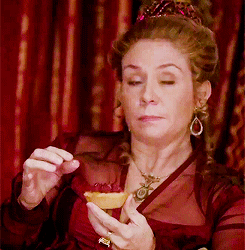

And don't forget the bes of all. . . Lady Olenna Tyrell!!

181 notes
·
View notes
Text
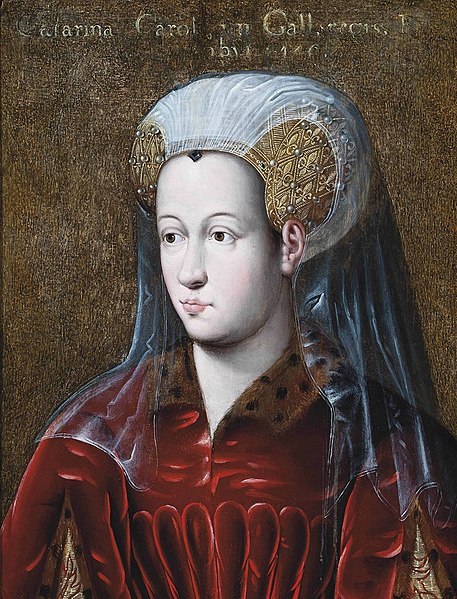
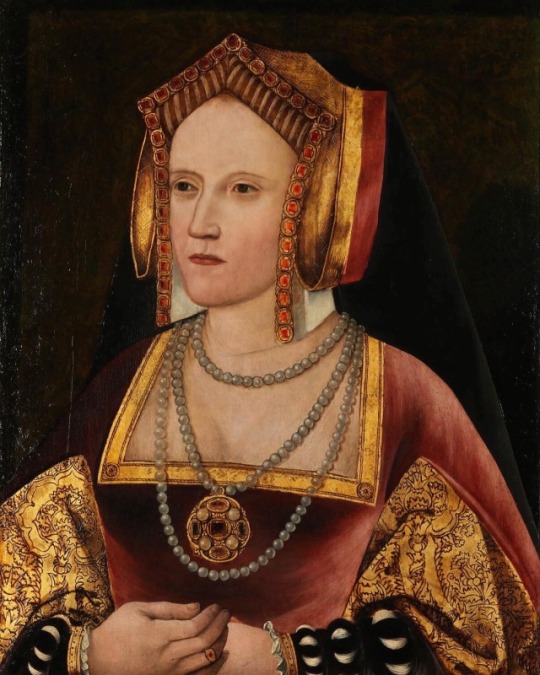
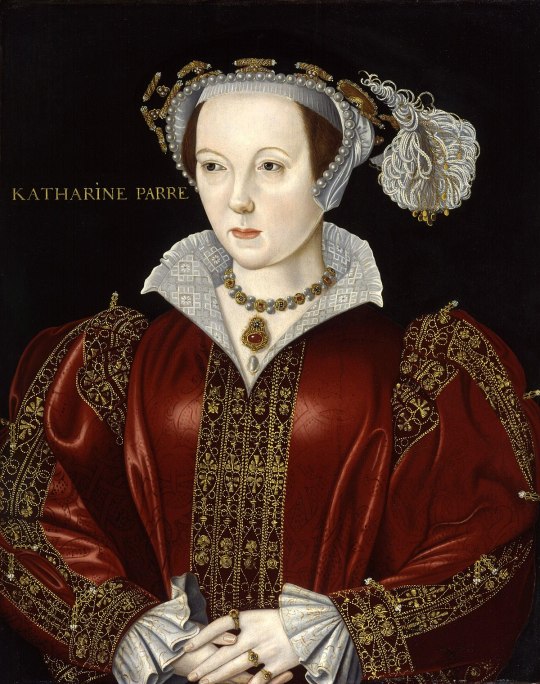
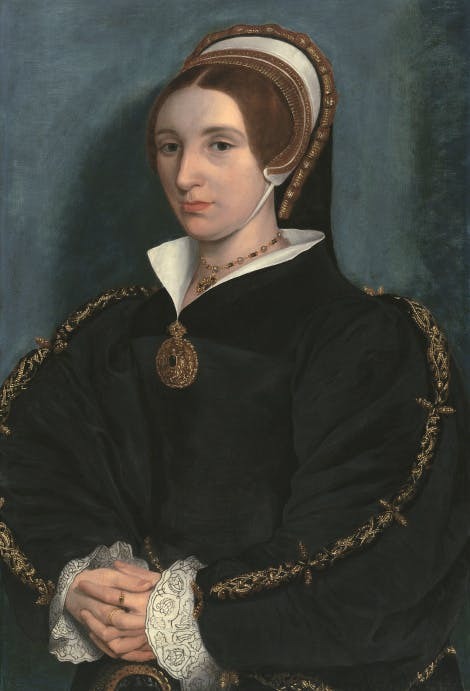
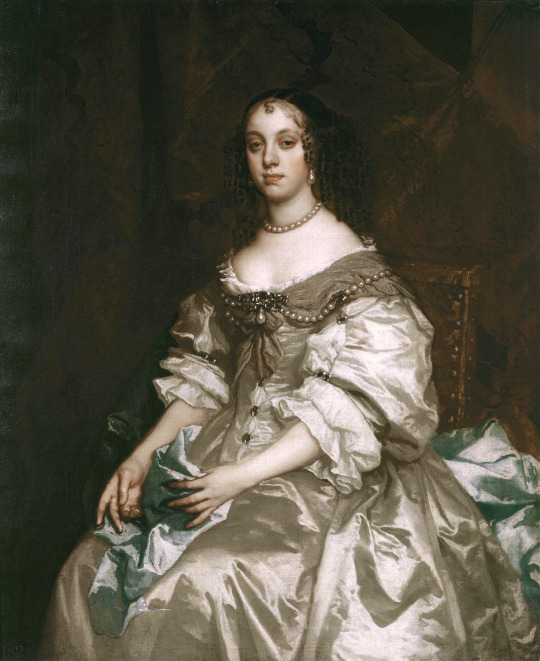
The 5 Queen consorts of the British Monarchy named Catherine;
1. Catherine of Valois (1401-1437): Consort of Henry V of England during the 15th century.
2. Catherine of Aragon (1485-1536): First wife of Henry VIII and queen consort of England during the early 16th century.
3. Catherine Howard (c. 1523-1542): Fifth wife of Henry VIII, queen consort of England in the early 16th century.
4. Katharine Parr (1512-1548): Sixth and final wife of Henry VIII, queen consort of England in the mid-16th century.
5. Catherine of Braganza (1638-1705): Consort of Charles II of England during the 17th century.
#Art#history#art history#british royal family#ktd#brf#throwback#queue#Catharine of Aragon#Catherine of braganza#Katherine parr#catherine howard#Catherine of Valois#queen catherine#royalty
13 notes
·
View notes
Photo

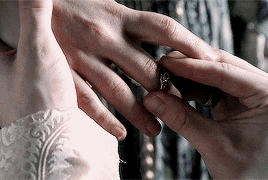






→ history + owen tudor and catherine of valois
requested by anonymous
Queen Catherine, being young and lusty, following more her own wanton appetite than friendly counsel and regarding more private affection than prince-like honour, took to husband privily a gallant gentleman and a right beautiful person, imbued with many goodly gifts both of body and mind, called Owen Tudor. — Raphael Holinshed, Chronicles of England, Scotland, and Ireland
#historyedit#owen tudor#catherine of valois#medieval history#15th century#english history#house of tudor#house of valois#historical fancast#*history#*requests#*mine#*historical couples#cw: blood#sorry for the delay!
265 notes
·
View notes
Text
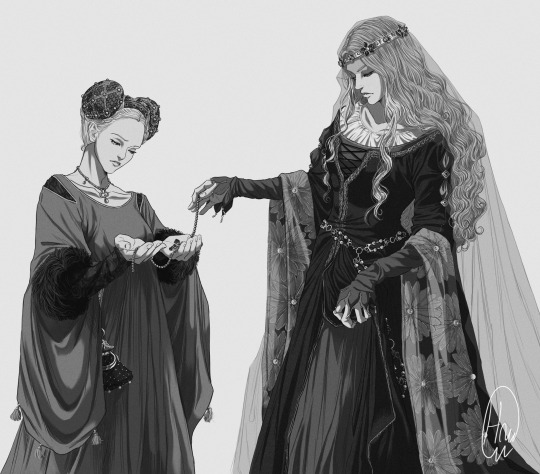
Book illustration - Anne & Cecily Neville.
There's not much difference between a woman and a caged bear cub. We are prisoners in our own marriage, Cecily.
#the wars of the roses#15th century#middle ages#medieval#medieval fashion#illustration#sketch#drawing#art#edward iv#elizabeth woodville#cecily neville#richard duke of york#anne countess of stafford#henry vi#humphrey duke of gloucester#john duke of bedford#catherine of valois#elizabeth of york#artists on tumblr#character design#english history#the white queen#the white princess#book writting#medieval costume#house of york#house of lancaster
93 notes
·
View notes
Text
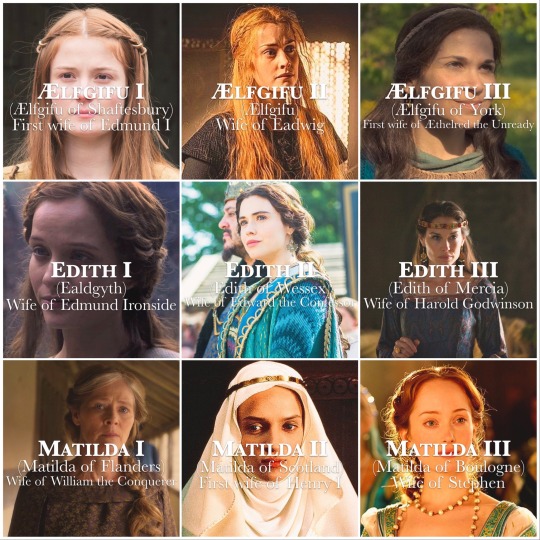



If the English and British consorts had regnal numbers
#i decided not to include the ones where there’s only one consort with that name#since they wouldn’t have a number#Ælfgifu of shaftesbury#Ælfgifu#Ælfgifu of york#ealdgyth#edith of wessex#edith of mercia#matilda of flanders#matilda of scotland#matilda of boulogne#eleanor of aquitaine#isabella of angoulême#eleanor of provence#eleanor of castile#margaret of france#isabella of france#anne of bohemia#isabella of valois#catherine of valois#margaret of anjou#elizabeth woodville#anne neville#elizabeth of york#catherine of aragon#anne boleyn#anne of cleves#katherine howard#katherine parr#phillip ii
135 notes
·
View notes
Text
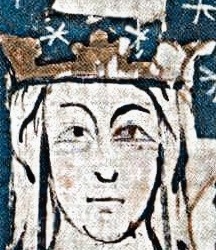

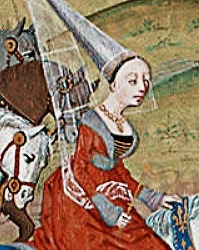


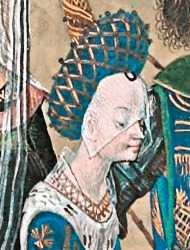


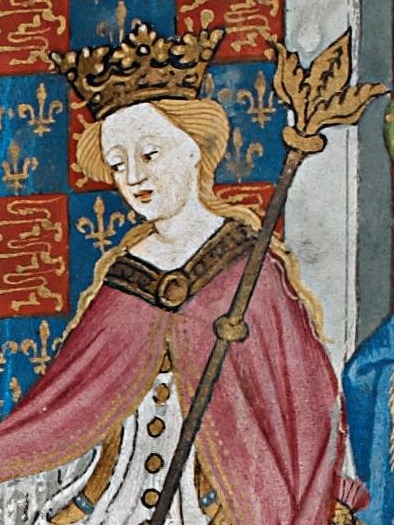

CONSORTS OF ENGLAND SINCE THE NORMAN INVASION (2/5) ♚
Eleanor of Castile (November 1272 - November 1290)
Margaret of France (September 1299 - July 1307)
Isabella of France (May 1308 - January 1327)
Philippa of Hainault (January 1328 - August 1369)
Anne of Bohemia (January 1382 - June 1394)
Isabella of Valois (October 1396 - September 1399)
Joan of Navarre (February 1403 - March 1413)
Catherine of Valois (June 1420 - August 1422)
Margaret of Anjou (May 1445 - May 1471)
Elizabeth Woodville (May 1464 - April 1483)
#my photoset.#history#historyedit#history edit#plantagenets#lancaster#house of lancaster#house of york#elizabeth woodville#margaret of anjou#catherine of valois#the king netflix#the white queen#joan of navarre#isabella of valois#anne of bohemia#philippa of hainault#isabella of france#margaret of france#eleanor of castile#royalty#royals#medieval history#medieval queens#queen consorts#war of roses#english history#historical royals#consorts of england#consorts of england and britiain.
139 notes
·
View notes
Photo
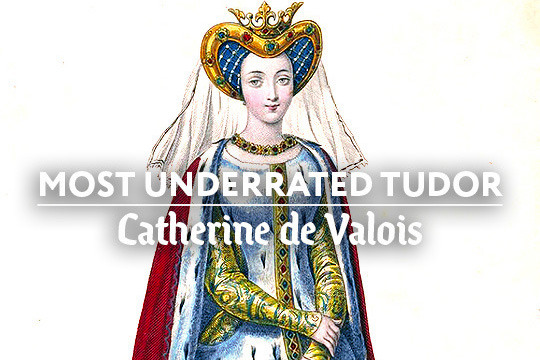

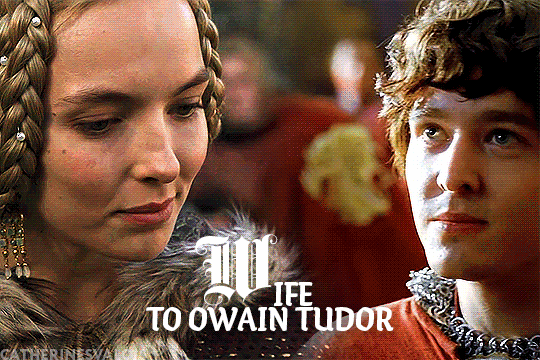
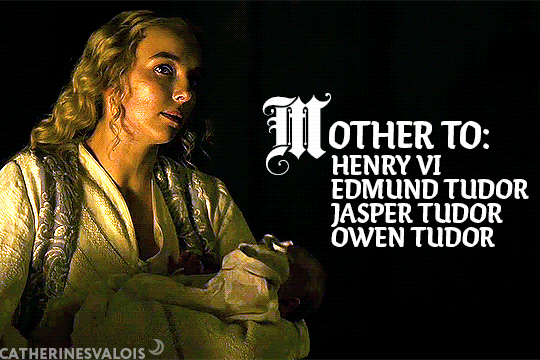
TUDOR WEEK 2022
DAY 5 MOST UNDERRATED TUDOR FAMILY MEMBER(S) → CATHERINE DE VALOIS
Catherine de Valois was the daughter of Charles VI and Isabeau of Bavaria. During the Hundred Years War, Catherine was contracted to marry Henry V of England as part of the peace treaty, known as the Treaty of Troyes. Their marriage was intended to pave the way for France and England to cease fighting with Henry V on the throne of England and France. This didn’t happen. Henry V died two years later leaving behind not only the widow Catherine, but their infant son, Henry VI. At some point after Henry V died, Catherine entered into a relationship with Owain Tudor. Owain ap Maredudd ap Tudur (or Owen Tudor) was a Welsh courtier from a distinguished family from Penmynydd. At the time of their relationship, Owain was installed as either the keeper of her wardrobe or household. Altogether, Catherine had three sons with Owain and the couple remained together until her death in 1437. Her sons Edmund and Jasper were close with their half-brother, King Henry VI. While there is usually doubt as to the legitimacy of Owain and Catherine’s marriage, an entry in the Parliament Rolls states that Edmund and Jasper (the two eldest sons of Owain and Catherine) were conceived and born within wedlock. This would suggest that some form of evidence or proof of marriage was the basis of this declaration.
For a family tree for Catherine and her children see this → post
I want to thank @richmond-rex for their helpful information on the legitimacy of Catherine and Owain’s marriage and their children. If you love Tudor content, go follow!
Image
1. Catherine of Valois by Edward Hargrave, 1842.
#tudorweek2022#dailytudors#catherine de valois#catherine of valois#owain tudur#owain tudor#owen tudor#house of tudor#tudorerasource#tudoredit#perioddramaedit#periodedit#perioddramasource#gifshistorical#userperioddrama#userbennet#historicwomendaily#women in history#historical ladies#historical women#henry v#henry vi#tudor history#gifs: mine#richmond-rex
259 notes
·
View notes